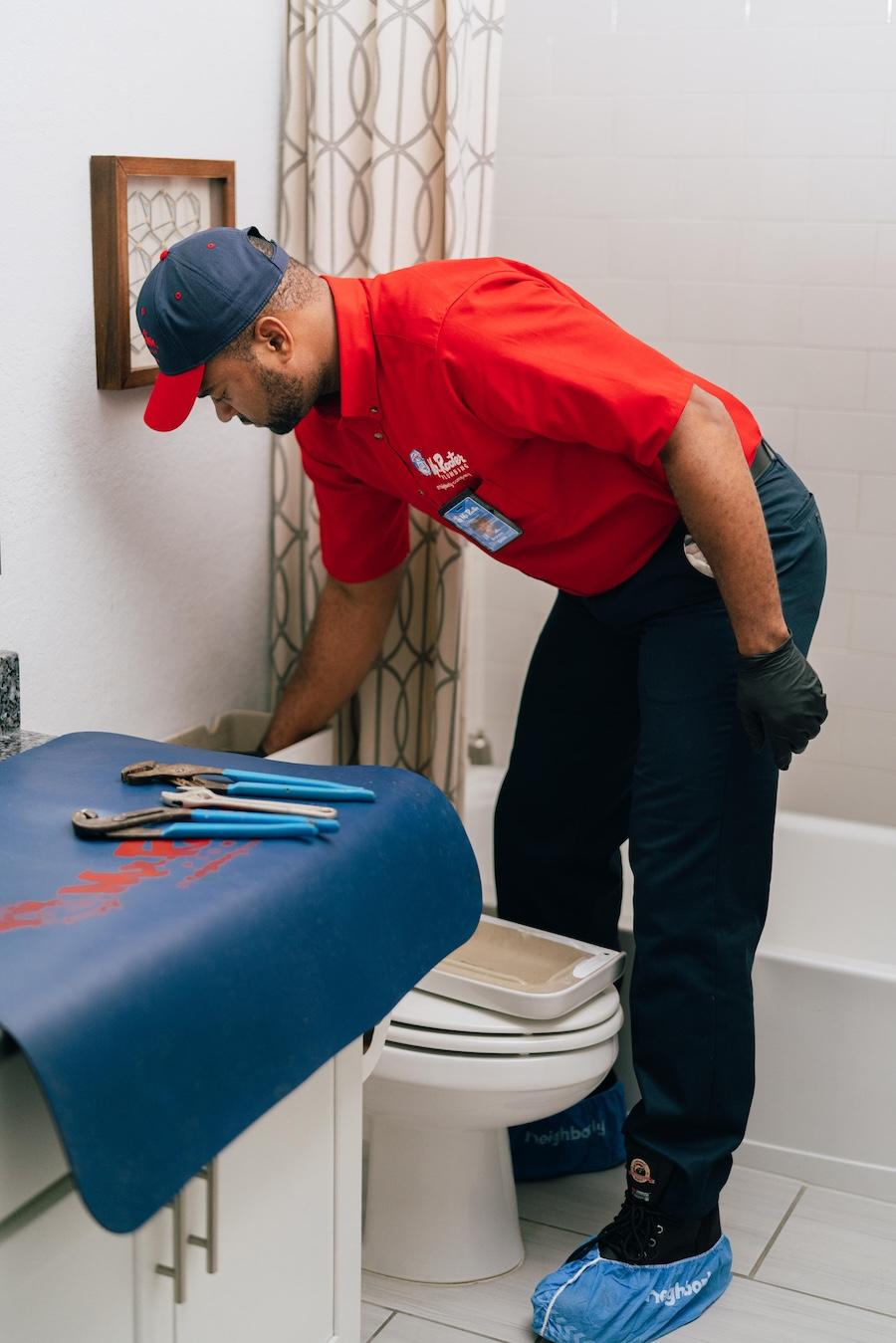Schedule a Plumber This Tuesday to Get 50$ OFF
Schedule a Plumber This Tuesday to Get 50$ OFF

When your toilet starts acting up, call Mr. Rooter Plumbing. Whether you’re dealing with constant leaks, running water, or need another clogged toilet fix, deciding between a rebuild or a replacement can be tricky. The right choice depends on several factors, including the condition of your toilet, its age, and your budget. Knowing the differences between these options can help you make the best decision for your home. If you want to avoid unnecessary expenses, keep reading for information that will make the process a whole lot easier.
The first step is to determine what the problem is. Some issues, like a broken flapper valve or a worn-out fill valve, are minor and easily fixed with a toilet repair. A rebuild usually involves replacing internal components to restore functionality without replacing the entire fixture. However, if your toilet has structural damage, cracks, or frequent clogs, it might be time to consider a complete toilet replacement. Here are some common signs you can likely fix with a rebuild:
Budget plays a central role in deciding between a rebuild and a replacement. A toilet repair focusing on internal parts like seals and valves is typically less expensive than a full toilet installation. Rebuilds are a cost-effective choice for homeowners who want to extend the life of their existing fixture without the added expense of purchasing a new unit. However, if your toilet has reached the end of its lifespan, investing in a replacement could save you money in the long run. Modern toilets are more water-efficient, so they can help lower your monthly utility bills. A new installation should also come with a manufacturer’s warranty, which can protect against future issues.
Older toilets manufactured before the 1990s can use up to five gallons of water per flush. Newer models are designed to use as little as 1.28 gallons per flush, which meets EPA’s WaterSense criteria. If environmental sustainability is important to you, replacing an outdated toilet with a high-efficiency model is the greener choice. While a rebuild might fix your toilet trouble, it won’t improve water usage if your toilet is outdated and inefficient.
On average, a well-maintained toilet can function efficiently for 25 years or more. Regular wear and tear, hard water deposits, and frequent use can shorten its lifespan. While many internal parts are replaceable, structural issues or recurring problems might mean that it’s time for a toilet replacement. If you’re not sure about the age of your toilet or its overall condition, consider scheduling a professional inspection. Local plumbers can identify hidden issues that might influence your decision.
A toilet rebuild focuses on replacing worn-out components inside the tank and base. Common parts involved in a rebuild include:
A skilled plumber can complete a rebuild in a short time and restore your toilet to near-new condition. If your toilet bowl and tank are in good shape, this option is a practical and affordable fix for many common issues.
If you choose a new toilet installation, you’ll first need to choose a model that fits your needs and style. There are a lot of options available, ranging from basic models to luxury toilets with advanced features like bidet attachments and heated seats. Professional plumbers will make sure the installation is done correctly so you can avoid leaks and property damage. If you’ve decided on a replacement, here are a few considerations:
While DIY repairs can sometimes handle minor issues, serious problems require the help of a professional plumber. Attempting complicated repairs without the right tools and knowledge can lead to more damage and higher repair costs. For a reliable toilet repair, an urgent clogged toilet fix, or a professional installation, the team at Mr. Rooter Plumbing has the skills and experience to get the job done right. Contact us to schedule your appointment.
There is something different about living in older neighborhoods. You can feel the sense of community, the memories, and the laughter as you walk through the streets. However, for many…
Water and gas leaks are costly and frustrating, especially when they are hidden. Most leaks are noticed by homeowners through warning signs, such as rising water bills and reduced water…
A garbage disposal is one of the most convenient tools in the entire modern home. Unfortunately, most homeowners misuse the disposal as a way to get rid of organic waste.…